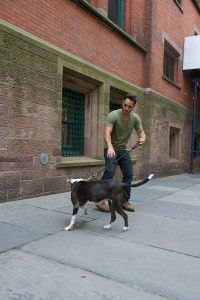

Because of this, we’ve developed our own coping mechanisms crossing the street, tightening up our hold on the leash, etc. Let’s face it, reactive dogs engage our internal radar, where we constantly strive, to see dogs before getting caught off guard. To successfully train your dog, practice Calm Confidence. If they struggle, go back to the management tool, and if they do well, reward them! Half-way through your walk, change your dog over to their flat collar or harness to give them a chance to do well. They’re also a great way to start out your walk with an overly happy and active dog. Use management tools when you’re zoned out, when you’re on the phone or when you’ve had a bad day. I’ve seen more than one reactive dog lose it with one of these collars on, only to thrive once the negative collar was removed. But if we can get the mouth of the equation, then we can get them to look away and begin to focus on you.īe sure to use tools that help you! Prong, pinch or so-called “training collars” are negative reinforcement and inject discomfort – and even pain – into an already tense situation. Often when dogs have success with their mouths (barking, lunging, etc) they don’t try any other coping mechanisms. If your dog lunges or pulls, their mouth’s are closed by the pressure on the leash, and they are turned back toward you.

Gentle Leaders work by fitting around the dogs mouth and attaching to the leash. If your dog barks or lunges or is completely out-of-control on the leash, use a Gentle Leader head halter. Do your dog a favor, and stock up on cheese sticks, chicken and frozen meatballs. And treats, lots of treats! Consider this, you’re not just trying to get your dog to do something, you’re trying to get them to give up something that has worked for them – that’s asking a lot, for any of us. A crate is a common form of management, the dog is confined until they learn not to be destructive when you’re away.Īt pranaDOGS, the management tools we use include: belly bands, head halters, no-pull harnesses, and for dogs who have bitten in the past – muzzles. For example, until I’m sure a dog is over their chewing phase, they’re monitored while in rooms with the decent furniture.Īctually most of us use management more than 80% of the time! Management is the key to having fun with your dog, and not losing your cool every time you get home. Managing your dog means setting up the environment, and your life, in such a way as to ensure nothing bad can happen to them, and they in turn cannot do damage to others. Often the age, size, history, etc will affect whether or not this can be overcome. Some dogs, with the right playgroups and a lot of practice, can learn proper play techniques, others need to be managed to be sure they stay below threshold.


 0 kommentar(er)
0 kommentar(er)
